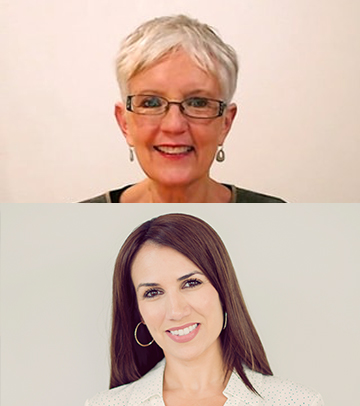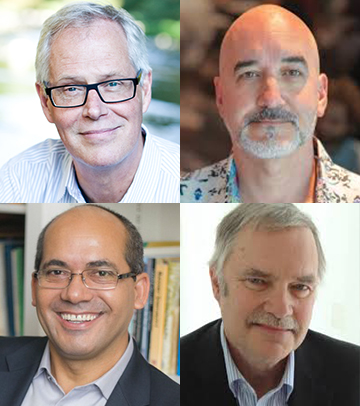How Compassion-Oriented Therapies Work and What Makes Them So Effective
 |
with Christopher Germer, PhD;
|
 |
with Christopher Germer, PhD; Dennis Tirch, PhD; Geshe Lobsang Tenzin Negi, PhD; Paul Gilbert, PhD;
Kristin Neff, PhD; Jack Kornfield, PhD; Susan Pollak, MTS, EdD; Christopher Willard, PsyD; Ruth Buczynski, PhD and Ashley Vigil-Otero, PsyD
Sign up for a Gold Package

I am so enjoying these webinars
I have a question regarding dissociation…as some people ‘flee’ this way…it is also freeze as some within this state are catatonic and can’t, once triggered, couldn’t be mindful enough to be self compassionate…So, I wonder why dissociation was not mentioned.
…However, if self compassion is practised in moments of being less triggered,..does their dissociation stop as someone starts to feel safer in themselves?
Thanks again for the series. I look forward to the next two.
Thank you so much for doing this.
I am at a stage in my journey from CDT ( childhood developmental trauma) where I can sit and be with Compassion for much longer and with greater depth. I skimmed these emotional waters for years, dipping in deeper as I acclimated to the new sensations of experiencing let’s say, anger or resentment in a new way while my body caught up .
I used Psycho-Cybernetics
By Maxwell Maltz , MD FICS
in the early 90’s and attribute a lot of my staying connected, to this concept.
I did and do at times find it difficult to hear things like , “ I look at them with Compassion “ , I have often mistook that as pity or a form of manipulation.
I believe it was mentioned that some people don’t have good Attachment histories and doubt not only their existence but the validity of others perceptions.
I was using compassion and stimulating my Oxytocin
while in a trigger and for the first time I could imagine My
adult self holding me as I sobbed and gave myself soothing words that I craved as a child. What a difference in the experience. It took less time to “ go through it “ and even though the pain (sadness) was intense , my response was different. I did not go into auto-response of sameoldsameold .
I am also noticing that I am more willing to look and feel than I was even a few months ago.
Getting a thicker outer layer and a gentler inside so that my Unholy trinity can rebalance and I can flow again until the next whatever. I am feeling Safer and more Competent to explore more.
Many thanks for all your amazing work. This is coming from someone who had Desyrel at the age of 19 and ECT in my 20’s and now 62.
The Essence of a person is truly remarkable because all my messages were to self Abuse/self Destruct and somewhere I found a piece that kept saying” No you are not what your brain tells you” so I Feel Validated and that is a huge burden off my shame shoulders.
May you have Love, May you have Safety, May you have Peace of heart and mind.
You make a difference
Thank you for sharing. May you be well :)…and joy be yours more and more <3
Love idea of unholy trinity of “ self Blame, Isolation, Rumination” almost like
Ft, Fl , Fr. in Traumatized patients
Antidote is Loving Kindness Meditation
‘SEAT’ reminds me a lot like Tara Branch’s Practice of RAIN,STOP and ACT. Not fuse or Over Identifying with the others emotional States. Excellently put with clarity and courage with kindness softness and wisdom .
I’m one of those people whose attendance is supported by people who buy the Gold Package!
This series based in compassion is an outstanding gift. I would be delighted to see these NICABM therapists put together a handbook for teachers, parents and all other non-therapists about compassion-oriented therapy for ourselves and the people we love and care for and about. We, the people of Earth – need compassion for ourselves, for others, for our shared lives, and our planet.
I’m frequently struck by how much current studies and research crystalize, codify and clarify the practices that the 12 step communities have been using for so long without understanding why they work.
The practice of stepping back and getting a new perspective of ourselves can be illustrated by a story I use with peers. “If one were to take two people into the forest one at a time and ask each to describe a tree, they would probably describe two different trees. The first might describe a dark, dank, musty tree, with mold and foul leaf litter on the ground at its feet. The second might describe a tree that is bright and green, with clear bark and just generally pleasant to behold. When you take them both back to look at their trees, they are one in the same. The south side which lives in the sunlight, and the north side, which lives in darkness.
Hi, I really loved this module, there was so much useful information in here on approaching inner criticism/negativity etc. One of the points that really struck me was the concept of “common humanity” as a means to move out of self-isolation. That is such a potent tool and when I listened to this I felt my whole body relax! Thank you for this very interesting series.
2nd time through. I was looking for some things I missed first time. Still missed them. Something about Fight / Flight / Freeze for INTERNAL stuff.
The suggestions for guiding patients through the steps than lead to self compassion were great! This is really practical and strong!